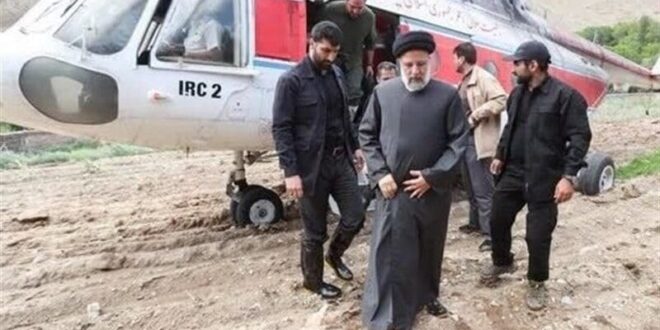The helicopter crash that killed Iranian regime president Ebrahim Raisi and other senior regime officials has exploded like a bomb within the clerical regime and plunged the entire regime into shock.
Although the regime, in its usual deceitful manner, tried to mitigate the impact of this incident by spreading contradictory news and delaying the announcement of the confirmed deaths of Raisi, foreign minister Hossein Abdollahian, and other passengers, the signs indicated that it was over.
The regime’s attempts to downplay the matter only highlighted its fear and the regime’s shaken state. The regime’s propaganda apparatus eventually admitted: “All the occupants of the president’s helicopter have been killed.” Besides Raisi and Amirabdollahian, the other passengers killed in the incident were Mohammad Ali Ale-Hashem, the representative of regime supreme leader Ali Khamenei in East Azerbaijan province; Malek Rahmati, the governor of East Azerbaijan province; Mehdi Mousavi, commander of the presidential security guard; and three flight crew members.
After the first reports of Raisi’s helicopter crash, a wave of joy and elation swept across the country. This national celebration was due to the death of one of the most brutal butchers, notoriously renowned for executing Khomeini’s order in 1988 for the massacre of more than 30,000 political prisoners, most of whom were members and supporters of the People’s Mojahedin Organization of Iran (PMOI/MEK). In the same year, 1988, Hossein Ali Montazeri, Khomeini’s heir apparent, told Raisi and three other butchers that this great crime of the Supreme Leader had made the regime detested by the people and that their names would be recorded in history as the worst criminals.
After receiving reports that his massacre order had not been fully executed in some cities as he had wished, Khomeini wrote a letter dated January 1, 1989, to the Hossein Ali Nayeri:
“You and Hojjatoleslam Mr. Raisi are assigned the judicial mission to review the reports of the cities of Semnan, Sirjan, Eslamabad, and Dorud, and to implement God’s ruling in the mentioned cases with precision and speed, free from bureaucratic complications.”
Two weeks after issuing the above order, on January 13, 1989, Khomeini again assigned Nayeri and Raisi the mission to expedite the issuance of execution sentences. Khomeini wrote:
“To Hojjatoleslam Messrs. Nayeri and Raisi, you are assigned to take action in the mentioned cases as you deem appropriate within the framework of dear Islam. It is surprising that such events happen in an Islamic system, yet with complete calmness, the execution of God’s rulings is suspended, and other tasks are prioritized over judicial work.”
Again, a week later, on January 21, 1989, Khomeini once more wrote an order for these two, stating: “All the files that have so far astonishingly remained stagnant in that council and the implementation of God’s ruling has been delayed should be handed over to Hojjatoleslam Messrs. Nayeri and Raisi so that they may execute God’s ruling as soon as possible, as delay is not permissible.”
The next day, on January 22, 1989, Raisi wrote to Khomeini asking if the implementation of hudud, meaning amputations, or executions. Khomeini replied that it meant both the issuance of hudud punishments and qisas (retributive justice). Raisi later said: “The order for amputations is one of our great honors” (Aftab News, October 26, 2010).
As Khamenei’s head of the judiciary, Raisi was responsible for the massacre of 1,500 protesters in the November 2019 uprising and until his death, he was complicit in all the brutal executions and medieval tortures in the regime’s prisons, especially the massacre of 750 martyrs of the 2022 uprising.
After the news of the helicopter crash was published, Khamenei said in a gathering of regime agents, “The nation [i.e., Basij and IRGC] should not worry, no disruption will occur in the country’s affairs.” This message indicated how worried and frightened he was about losing his main arm and how fear and terror had shaken the foundations of his regime.
 Eurasia Press & News
Eurasia Press & News


